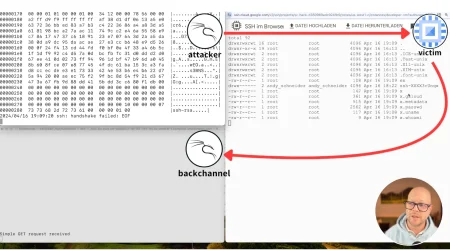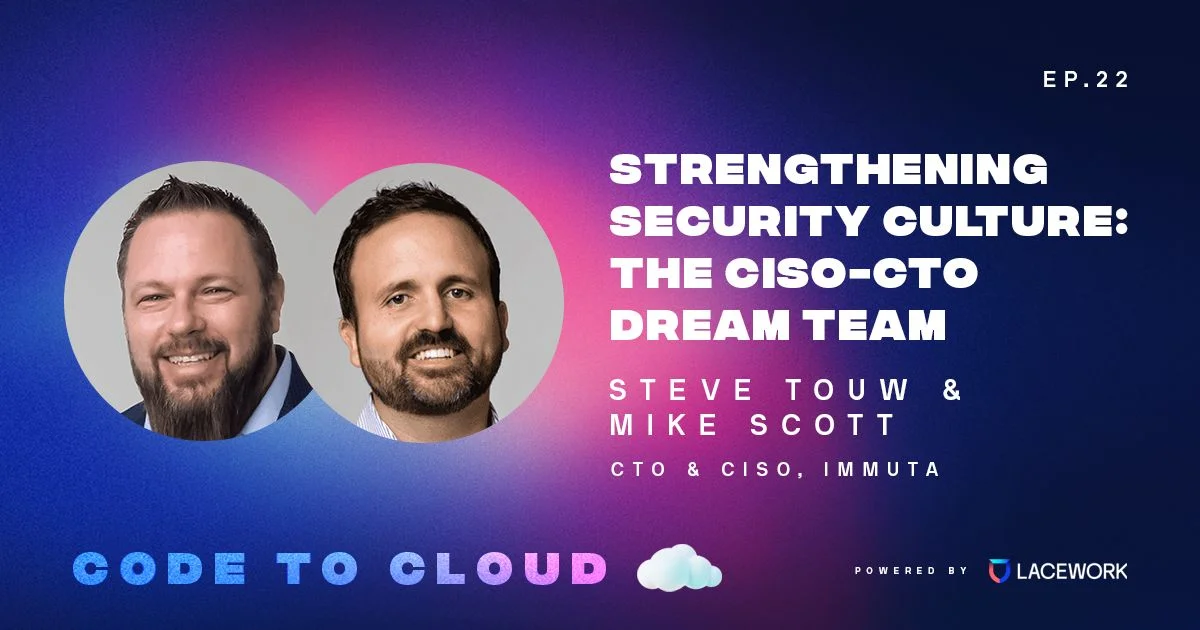How Lacework CEO Jay Parikh embraces chaos: Insights from the Grit podcast
Lacework CEO Jay Parikh recently joined Grit, a weekly podcast that dives deep into the world of leaders who have helped create, build, and scale world-class organizations. In this episode, Jay and host Joubin Mirzadegan, a go-to-market operating partner at venture capital firm Kleiner Perkins, discuss pivotal moments in Jay’s career and how each milestone played a role in his approach to leadership.
Listen to the full episode here or read on to learn the key leadership takeaways:
The power of chaos
Jay initially supported product launch strategies and marketing at Akamai in 1999 before transitioning into corporate development, a new field of opportunity for the rising executive. He jumped in, learned, absorbed, and was fortunate to work with talented teams.
I think I'm very, very allergic to the status quo. Having some — in the right amount — of chaos in building and scaling teams, technology, products, businesses at just an unprecedented rate (is) where I find maximal learning. You thrive in these moments.
Jay’s belief is that careers are a series of “S curves,” and one key to success is minimizing the flat spots. That belief led him to constantly seek a steep rate of learning and adventure at each new chapter of his journey; at Akamai, the role in corporate development led to new experiences that helped shape his career as an executive.
“Being able to just jump into these experiences even though they were outside of the engineer box just really helped me develop that appreciation for teams, leadership, people, challenging situations, and [gave me an] understanding more and more about the business, our customers, partnerships, and more,” Jay said.
As Jay navigated various roles and progressed as a leader, he maintained certain key traits that have been central to his success, including his quiet intensity. He’s naturally curious and observant, and has always been eager to listen to and learn from diverse perspectives.
“Great people want to do great things and they want to grow. They’re not going to grow by doing the same things over and over again,” Jay said.
That’s why Jay is constantly looking for ways to optimize not just different aspects of business, but himself as well. He often thinks about, “How do you disrupt the way you think, the way you plan, the way you execute, the way you think about delivering great products to customers or clients out there?”
The world moves even faster than many people realize; and if you’re not disrupting yourself, you get left behind.
Transparency and adaptability
Jay’s work at Akamai eventually helped contribute to the company’s initial public offering (IPO). The transaction was a remarkable success, and made Akamai the fourth-largest IPO ever at the time.
Akamai’s stock soared from $26 to $353 per share, but the run was short-lived. Akamai’s primary customer base consisted of digital businesses, and as the dot-com bubble burst, many of the company’s clients evaporated. In turn, Akamai saw its stock price return to earth and price at a humble 56 cents per share within only a few months.
A company-wide ability to adapt was required to pivot the business. “So we had to go and do all of this engineering work to figure out how we were going to save money. And a lot of time [was] spent just trying to scavenge every dollar we could in terms of our burn,” Jay said.
Eventually, that hard work paid off. Akamai’s stock price powered through $50 in the mid-2000s and sits at over $85/share today.
Adaptability and transparency was also a critical part of Jay’s success later in his career. As VP of Engineering and Infrastructure at Facebook, Jay oversaw a family of critical systems during a dramatic period of company hypergrowth. During his tenure, Facebook grew from fewer than 1,000 employees and 300M users in 2009 to a workforce of 65K and more than 3 billion monthly users in 2020. He credits an openness and approachability from Facebook leadership (including a regular line for employees to ask questions of senior leadership) among the keys to maintaining the company’s core values throughout this period.
We (the Facebook leadership team) encouraged openness, directness, and the hard questions. That transparency was really important for such a fast moving business where we were figuring out so many different things and how the world was changing as well.
Prioritizing hiring and onboarding
Building a company starts with recruiting the right people and onboarding them effectively. The ideal candidate is someone whose character is not just compatible with the team but who is also additive and able to contribute to the team’s dynamics and overall growth.
“I take onboarding really, really seriously. One of the first things we did at Lacework when I got there was totally start over with whatever scrappy startup onboarding that we did. And we have a very sophisticated, highly produced [onboarding process]. Every executive is in front of the new employees in the first two days, if not once, maybe two times.” Jay said.
There's a playbook that I use for senior leader onboarding, and I have a ‘go slow to go fast’ mantra about onboarding leaders there. I think there's a ton of things around just expectation setting, feedback, team building, teamwork, and just making sure you get to a level of precision and you're able to execute with a vengeance as a team. And I want that kind of focus for everybody.
Building a resilient company with the best employees goes far beyond onboarding. It’s important to focus on development, growth, and a collective sense of self-awareness within an organization to enable people to perform at their peak and achieve the highest level of professional fulfillment.
To learn more leadership lessons from Jay’s career building and leading world-class companies, check out the full podcast here.
Categories
Suggested for you


